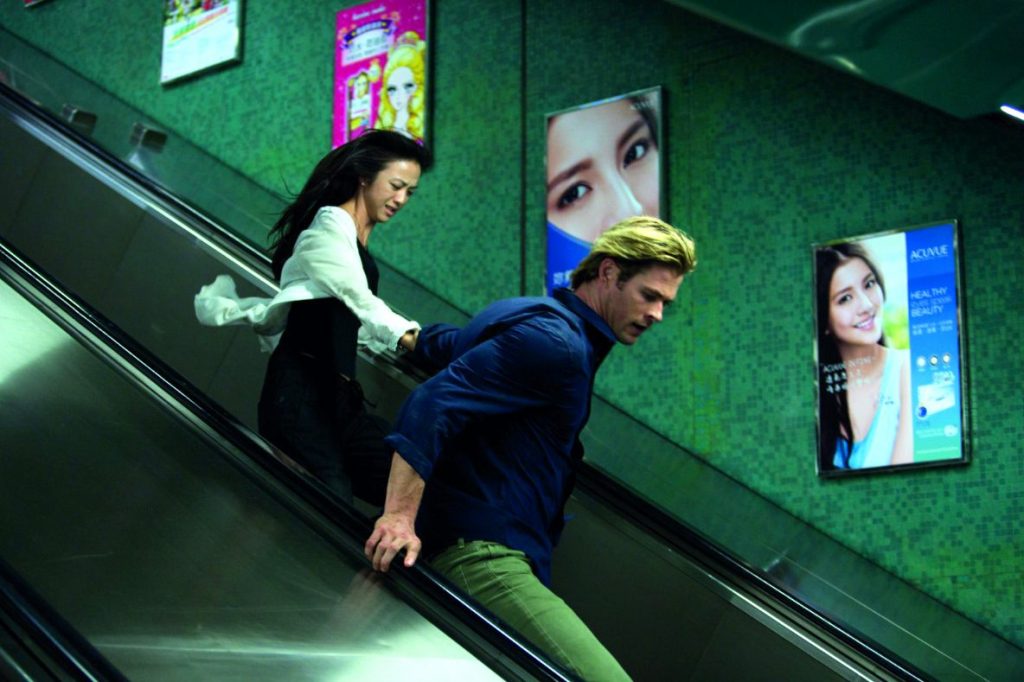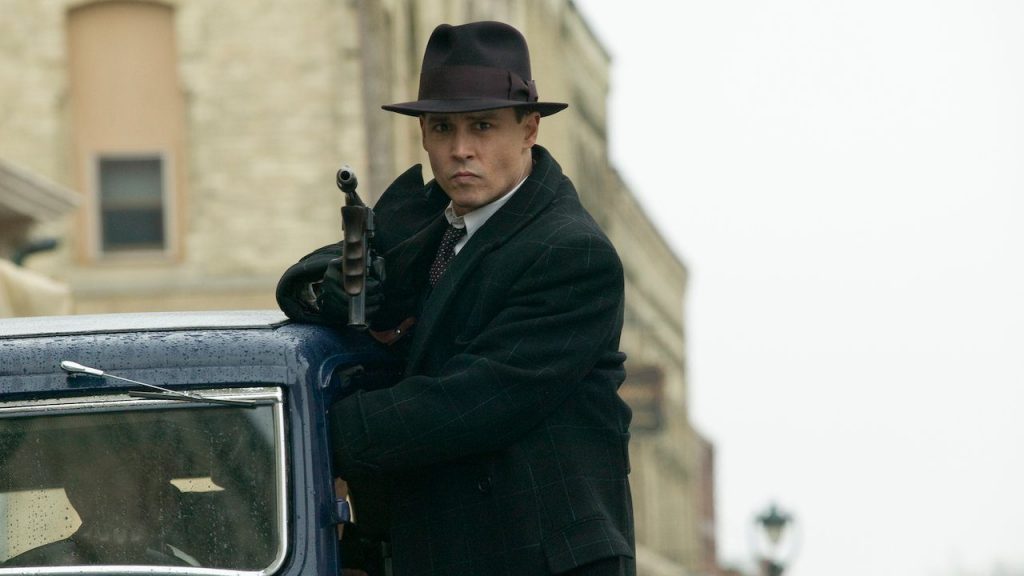When Michael Mann’s Blackhat opened in January of 2015, it couldn’t crack the top ten at the domestic box office. The movie barely stuck it out for three weeks in theaters and earned back a single-digit fraction of its $70 million budget. Yet somehow during the Sundance Film Festival that month, I found myself sitting in the storied Yarrow Bar at a table surrounded by some of the country’s most formidable film critics, and despite the bounty of earnest, independent gems at our disposal, all anybody wanted to talk about was Blackhat. Mann’s electrifying, experimental cyber-thriller paid a little lip service to genre conventions; instead, it was an almost abstract symphony of sound and color smeared across the screen in crackling, corrupted digital cinematography meant to mirror the twitchy surveillance state in which its stealthy characters operate. Blackhat is a Stan Brakhage movie with gunfights, providing the not unamusing vision of hulking Chris Hemsworth as an alleged computer genius hammering away on laptops with his massive, meaty fingers. (According to entertainment journalists at the time, the Thor star had to learn how to type for the role.)
Seven years later, this unloved, artsy-fartsy flop is apparently a big hit on Netflix, at least according to the unverifiable data provided by the streaming service in their dubious, daily top ten lists. (Who knows? If people will sit through Extraction maybe they’re up for a Hemsworth movie that’s actually interesting?) There might be something to these numbers though, as Netflix recently added Mann’s Public Enemies, another coolly-received exercise from the filmmaker futzing around at the bleeding edge of digital technology. This 2009 would-be summer blockbuster promised Johnny Depp –somewhere near the zenith of his Captain Jack Sparrow superstardom—as legendary, Depression-era bank robber John Dillinger against the Caped Crusader himself, Christian Bale, playing Melvin Purvis, the Fed who brought him down. It’s a movie I admire enormously and in all honestly, find a little trying to actually watch.
It’s a case of form following content, with Depp’s Dillinger emerging from a nine-year prison stint to the brave new world of 1933, as this one-time cowboy can’t adapt to a modern America interconnected by telephone lines and other inventions that have thrown a net around the formerly wild frontier. He’s hunted by an identically-dressed cabal of interchangeable college boys from J. Edgar Hoover’s Federal Bureau of Investigation, and his iconoclastic actions earn the ire of Frank Nitti’s Syndicate, an organized crime outfit operating out of a high-tech phone bank that looks suspiciously similar to the FBI offices. This is no country for old men, and Mann signals modernity with an alarming, occasionally ghastly use of home movie camcorder aesthetics denying us the pleasures of period film photography. Universal Pictures spent a purported $100 million painstakingly recreating 1930s Chicago for scenes that look like they were shot on your phone.
It’s a clever gambit, accentuating immediacy in ways that are also intensely alienating. (Boy, did looking at this movie make some people angry.) I feel like folks have eventually come around to the approach, as Steven Soderbergh expertly deployed similar tactics in his two seasons of The Knick, conveying what it must have felt like to live on the ground floor for a century of innovation via a jittery, hand-held camera and throbbing synth score, catching familiar historical trappings from odd, unexpected angles. But Public Enemies got there first, eschewing establishing shots to forge a constant sense of destabilization. Dillinger is a glitch in the matrix, a hotheaded disruption to the cool order of both centralized law enforcement and organized crime. The movie tries to position him as something like the first reality TV star.
Depp’s performance is a little too muted and aloof to quite pull this off. (There’s a delicious, probably apocryphal anecdote claiming that Mann interrupted a scene by saying, “Oh, I see what the problem is. You can’t act,” sending his star storming off the set for days, only enticed back to work by threats of litigation. It’s one of those stories that even if it isn’t true, I like to believe it is because it’s so funny and feels right.) But it’s just as difficult to latch on to Bale’s Purvis, a persnickety, company man conformist introduced shooting Pretty Boy Floyd – played a pre-fame Channing Tatum—in the back, brooding in the background while his dumb, sweaty, cop colleagues beat a woman with telephone books until she pisses her pants so they can all gun down Dillinger in cold blood like a dog in the street.

I personally prefer the high-spirited espionage goobledygook of Blackhat, where the nigh-incomprehensible plot takes a backseat to absurdly ambitious directorial bravado. Hemsworth’s hacker – who we meet in prison doing pushups and reading Foucault – is given a pass to assist a U.S./China task force in tracking down an anonymous baddie manipulating currencies and blowing up power plants because of something to do with the price of tin. Look, the story doesn’t matter much in Blackhat and on the eve of its release Mann drastically reedited the film, moving a nuclear meltdown that originally arrived at the movie’s midpoint into the opening scene.
(A flutter-cut montage contrasts news reports of the smoldering silo with old footage of the facility fully intact. Hilariously, some of the leading lights in film criticism at the time cited the “stock footage” watermark on a shot of the previously working plant as a mistake made by Mann. Thinking they had another American Sniper baby on their hands, clever critics cited the caption as something a “senile” 72-year-old director had somehow forgotten to remove from the film, displaying not just a spectacular ignorance as to how Hollywood movies are made and edited, but also a fundamental inability to understand images. Good job, guys.)
There’s a Director’s Cut of Blackhat that turns up on FX from time to time and clarifies a lot of story points. But I don’t like it as much as the original theatrical version, which puts all its emphasis on images and experimentation, designing sets and settings as symmetrical grids within which people move like the animated malware we see lighting up printed circuit boards in the film’s opening sequence. Mann and cinematographer Stuart Dryburgh do an incredible job placing these characters within vertical and horizontal mazes, whether juxtaposed against trains, escalators or lines of framed artwork on the walls. It’s the dystopian endgame of Public Enemies’ FBI and the Syndicate, as nearly every physical space in the film is another pattern of order trying to trap or otherwise confine these characters.
The big joke –and there are many in Blackhat—is that the only way to escape this grid is not through technology but through low-tech brute force. We watch elite computer hackers resort to walloping walls with axes and eventually stabbing each other with knives and sharpened screwdrivers by torchlight like cavemen. The final fight finds the characters walking the wrong way during a foot parade in Jakarta, framed by the filmmaker as irregularities marching counter to a latticework of humanity. Like most of Mann’s characters, they’re anomalies against the grid.
“Public Enemies” and “Blackhat” are now streaming on Netflix.

